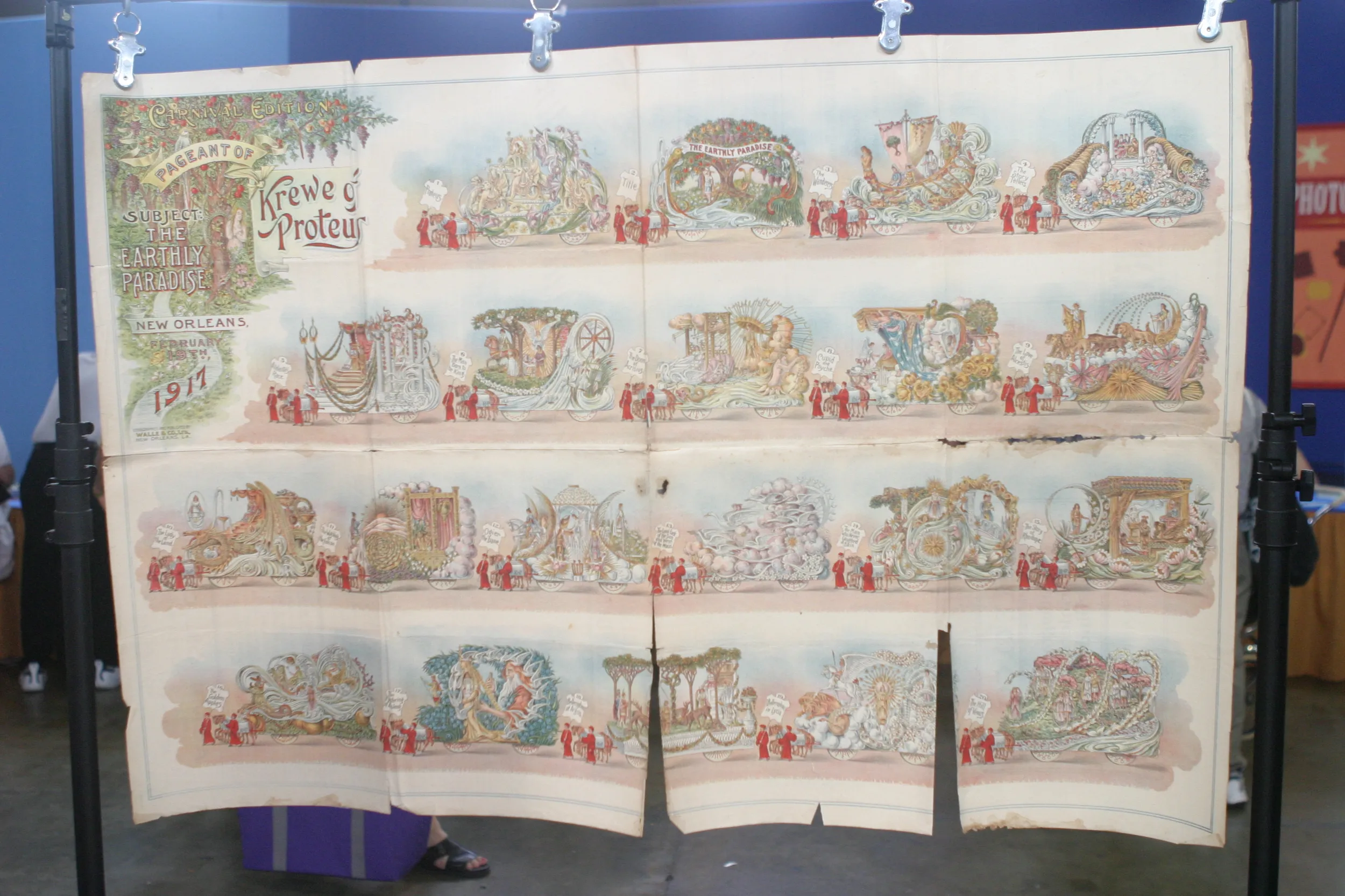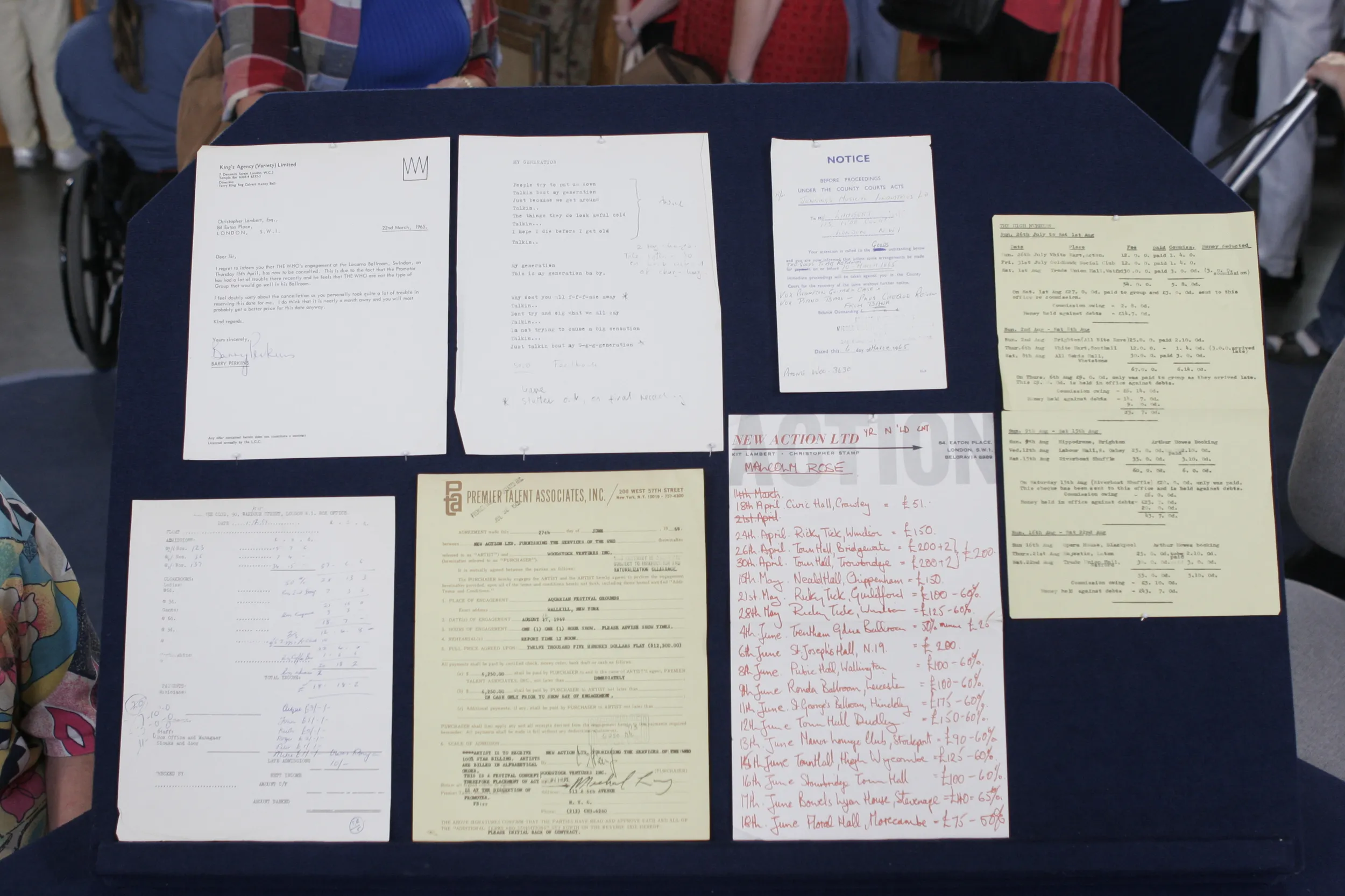GUEST: My father worked in the '30s at two World's Fairs and an exhibition in Texas.
APPRAISER: What was his job?
GUEST: He was supervisor of a revenue control area, and as a result, he ended up with an awful lot of memorabilia from several fairs, including the New York World's Fair of '39-'40. And his job was pretty much keeping track of the tickets. Tickets and revenue.
APPRAISER: What he actually collected were all the sample tickets and all the accounting forms. And at that World's Fair, it wasn't like Disneyworld today where you pay one admission and ride everything-- there was a ticket for everything and every day. It's a history of World's Fair business, and this is what we call ephemera. Most of the time, ephemera is just thrown away or kept in drawers or filing cabinets and never seen, and it's oftentimes scattered. There'll be one thing here, one thing there, but this is a whole collection of what I consider the best New York World's Fair '39-'40 stuff I've ever seen, because it's so unusual to have the tickets for the individual days. You got the official opening with the president of the United States in 1939, which was Franklin Roosevelt. And they have two different ones-- one for the good seats and one for the cheap seats. And at every World's Fair, different countries would set up exhibits, all the way back to the 1890s and even up to 1964, and here's Hawaii before it became a state. And it's stamped right across it "specimen," which means it wasn't to be used. Here's Frank Buck's Jungle Land, of course-- "Bring 'Em Back Alive," great movie star. The whole book is full of these pieces of history. All of these tickets are individual days and events, but they're all in here in a mishmash kind of a way. What do you want to do with this stuff?
GUEST: I'd like to be able to preserve it in some fashion, and I know this isn't the best way. The glue's dried and it's pretty much of a mess. You can hardly open it.
APPRAISER: Right, and that's what we see so often in ephemera is the items become put into books like this back then to preserve them, and nowadays, this is not archivally safe. One of the things you're going to have to do is you're going to have to remove it all from the pages, because the pages are acid and they will cause the paper to turn brown like these. It's best to have a professional do it. If a professional does it, they will then take the items out, and you put them in plastic pages made of Mylar, and that'll protect it and keep the acid from getting to it causing them to decompose. Some of the better pieces, like these, would go in Mylar sleeves that are larger and that would protect them. If you wanted to, you could frame up a whole bunch of them with a picture of your dad and this wonderful thank-you letter saying that he did a really great job for the fair. So I think you have an important piece of history and it actually has a lot of value. I think, individually, if this was all sold off, it would sell for $5,000 to $7,000.
GUEST: Mm-hmm. All right.









